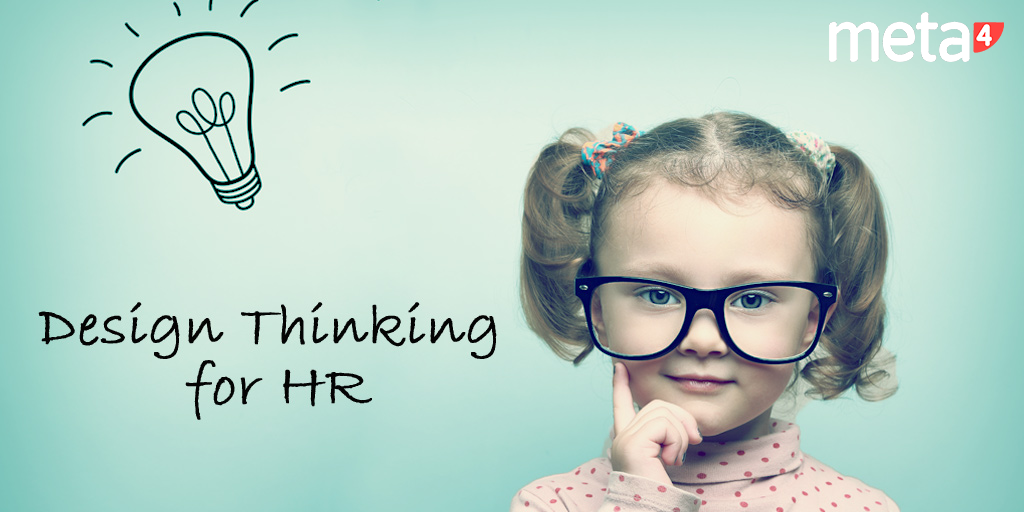Design Thinking is a method for creative problem solving, based on understanding the in-depth needs of different stakeholder profiles and its goal is to generate solutions that bring value to all stakeholders.
The most common applications focus on designing new products, services or business models. Apple, Airbnb, Starbucks, Nintendo, Nike and Google are leading companies in their markets which use design thinking as a key element in their efforts to generate new products and services.
However, design thinking’s potential goes further and organizations are beginning to show interest in bringing this into their employees’ skill sets, and thus, into the organization’s DNA. This way they will able to train up their employees to respond to a great many problems that come up during their daily activities.
Problems that may be most appropriately tackled by design thinking must comply with some of the following features:
- The challenge involves a situation where people are affected and it’s possible to deepen awareness of their needs and frustrations.
- There is a certain level of understanding of this challenge, but there may be different views and/or aspects that are not entirely clear.
- The level of ignorance and therefore uncertainty is relatively high; extrapolations cannot be made from past experiences.
- The situation is complex, as in there are a considerable number of variables, so it’s hard to know where to start.
- Much of the information needed is unavailable or doesn’t exist.
- It takes a great deal of creativity to understand and solve the challenge.
Under these circumstances, a problem is a situation where something is ‘wrong or less than ideal’. The term, problem, must be approached holistically, as an issue which includes aspects that are negative (difficulty, bottleneck, restriction), positive (opportunity for growth, potential achievement, goal, target), or neutral (challenge, change).
To avoid confusion, it is important to note that the people affected by the problem may be both external and internal ones of the organization, and problems may be strategic or operational ones.
To illustrate what has been discussed so far, let’s look at a couple of examples of real scenarios in which we have applied Design Thinking to develop new solutions to problems in two different companies.
Scenario 1: the company’s image in the technology sector does not attract talent
We have top calibre people in different technology disciplines, but recent graduates do not perceive us as a technologically advanced company and it is difficult for us to attract new talent.
Situation 2: dissatisfaction with internal knowledge transfer
In a large company, a problem has been identified in the way knowledge transfer between individuals and departments is done. Such knowledge would make the recipient’s work more effective, increase the flexibility of individuals and facilitate the creation of synergies.
Based on everything covered so far, I have been trying for a long time to convince people who hold managerial positions in HR or Talent Management of the importance of incorporating design thinking into the skillsets of their own department and the entire organization.
Design Thinking doesn’t just provide input to resolving many of the HR challenges on improving the employee’s or internal customer’s experience. It goes further as it can be used to upskill people within the organization. The aim is to train up these people to solve problems and to bring more value to their companies.
This way, the sales team may be able to identify more opportunities when interacting with customers, a company’s finance department, or with numerous branches. The financial department can find solutions to facilitate monthly financial consolidation. Plus, the marketing department can refocus how they make their presentations so these have greater impact.
Some of the main benefits that design thinking can bring to organizations which should be of interest to any manager are:
- Contributes to developing the skills needed to solve high-impact strategic and operational challenges.
- Creates greater awareness about people (external or internal clients) which in turn enables the generation of high-value solutions.
- Facilitates learning through experiments and low-resolution prototypes, increasing the likelihood of success with new solutions.
- Unifies organizations and demolishes departmental silos by tapping into multifunctional teams.
Design thinking has to do with empathizing and finding better ways of doing things; not just better products and services, but also better ways to meet human needs which may bring in plenty of solutions. Undeniably companies can benefit from incorporating more humane approaches to how problems are solved.
In short, design thinking offers enormous potential for creating work environments that improve productivity and employee satisfaction. It also leads to the creation of solutions that are desirable, feasible, and viable all at the same time, to the benefit of individuals and the company itself. Both benefits are goals that any HR department aspires to. Are you ready to be a pioneer?






